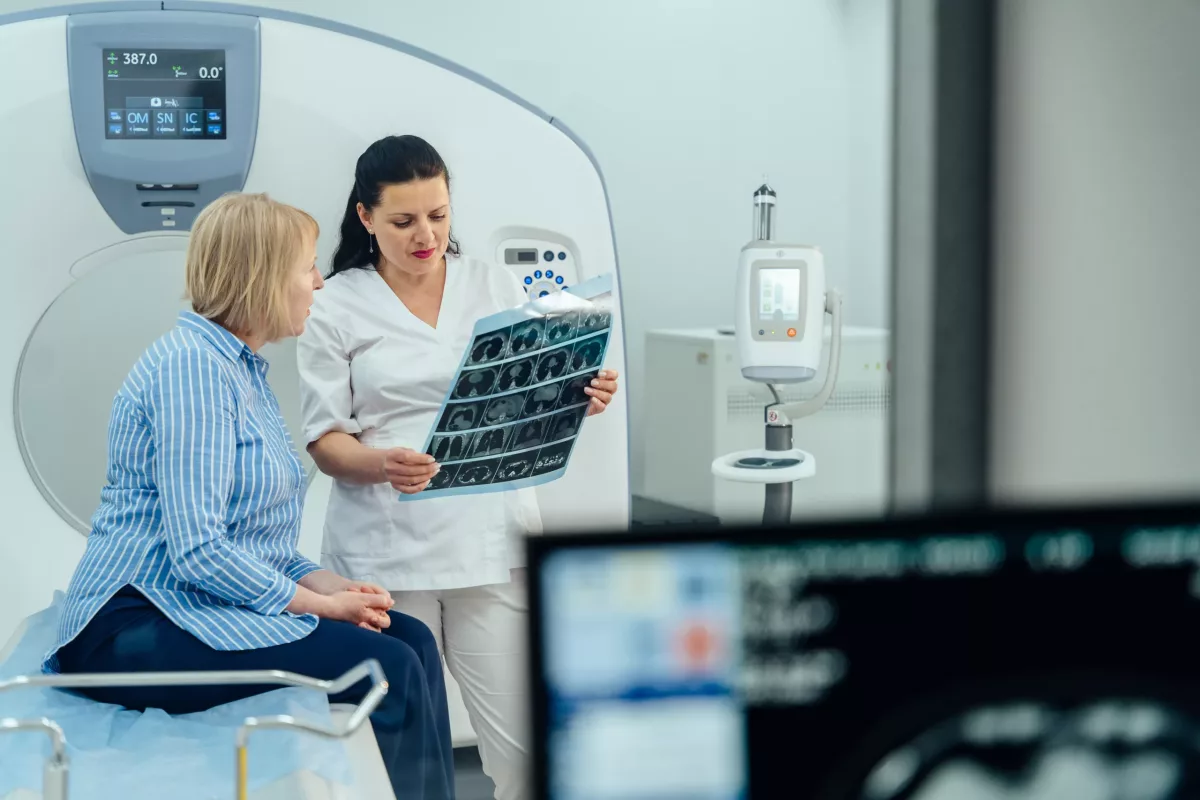A type of cancer that begins to develop in the urinary system is called urothelial carcinoma. Furthermore, it accounts for approximately 90% of all bladder cancers and 7% of kidney cancers. However, people who develop bladder or kidney cancer due to urothelial carcinoma usually experience the same symptoms and have similar prognoses. These types of cancer can be treated, but in some people, they can return.
If you develop this type of cancer, the tumor will develop in the urothelium (a tissue that lines a part of the urinary system).
How Does Urothelial Carcinoma Affect My Body?
There are different ways in which this tumor affects either the bladder or the kidneys. For example:
Urothelial Carcinoma in the Bladder
A triangle-shaped organ that is centered between the hipbones above the urethra and below the kidneys is called the bladder. It stores the urine after it drains from the kidneys. Urothelium is a tissue that lines the inside of the bladder. In most cases, a healthy bladder can hold up to 2 cups of urine.
In people who develop bladder cancer due to abnormal urothelial cells, the spread occurs from the inner lining of the bladder. In some cases, these abnormal cells may spread even to the fatty tissues located around the bladder. If you ignore the symptoms or do not get treatment, this type of cancer may break and spread to nearby lymph nodes and then to other parts of the body (such as the lungs, liver, bones, and others). Generally, this type of bladder cancer can be high-grade or low-grade. For example:
- Low-grade urothelial carcinoma – While this type may return, it often does not spread to the bladder’s muscle or other structures or organs in the body.
- High-grade urothelial carcinoma – This type of bladder cancer can be life-threatening, and it usually returns after treatment. Furthermore, it may spread to the muscle layer of the bladder and to other parts of the body.
Urothelial Carcinoma in the Kidneys
Normally, healthy people have 2 kidneys (bean-shaped organs located below the ribcage and behind the abdomen). Each kidney works to clear toxins and other waste from the bloodstream by producing urine. Thereafter, this urine collects in the renal pelvis and then drains to the bladder through a tube (ureter). Moreover, urothelial cells are located in the lining of the bladder as well as the kidneys, renal pelvis, and ureters.
When abnormal urothelial cells become too numerous, they form a mass called a tumor. If the tumor breaks, it may spread to the kidneys and other parts of the body.
Symptoms
Sometimes, people with urothelial carcinoma may not experience any symptoms. However, you should see a doctor if you notice blood in the urine or other changes. Check below some symptoms often noticed in people with this type of cancer:
- Unusual weight loss
- Dysuria (painful urination)
- Tiredness
- Prolonged back pain
- Low-grade fever
- A lump in the kidney area
If any of the previous symptoms occur or any others that cause concerns, immediately contact your healthcare professional.
Risk Factors
Nowadays, healthcare providers do not know what exactly causes urothelial carcinoma. However, they have identified some factors that could increase the risk of developing it. Examples include:
- Smoking – People who smoke cigarettes are at increased risk of developing urinary system cancers associated with urothelial carcinoma.
- Prolonged exposure to chemicals – Some recent studies have shown that working with the following chemicals increases the risk of this type of cancer. For example, leather, paint, rubber, dyes, textiles, and hairdressing supplies.
- Sex – Males are more prone to develop urothelial carcinomas compared to females.
- Age – Older people (over 65 years old) are at increased risk of developing kidney cancer, especially if they smoke cigarettes or drink heavy amounts of alcoholic beverages.
- A family history of bladder or kidney cancer
- Chronic bladder infections
- Schistosomiasis
This document does not contain all possible factors that may increase your risk of developing urothelial carcinomas. For more details, discuss it with your physician.
What Are The Potential Complications of Urothelial Carcinoma?
Those who develop urothelial carcinoma may also experience some complications. Check some examples below:
- Bleeding (including hematuria)
- Urinary tract infections (UTIs)
- Ureteral obstruction (blockages in the ureters)
- Hydronephrosis
- Urethral stricture
- Urinary incontinence
- Erectile dysfunction (ED)
- Metastasis
- Anemia
- Paraneoplastic syndromes
- Mental health problems
- Pelvic pain
However, you can talk with your doctor about ways to reduce the risk or prevent complications of urothelial carcinoma.
How to Prevent Urothelial Carcinoma?
While it is not possible to prevent this type of cancer, you can take some steps to reduce the risk of developing it. For example, quit smoking (if you face problems with smoking cessation, discuss it with your doctor), limit or avoid alcoholic drinks, and avoid exposure to chemicals.
Diagnosis
Physicians usually diagnose this cancerous tumor by performing the following tests. For example:
- Urine tests (also known as urinalysis) – These tests are often done to check for urine and its contents, including sugar, protein, blood, and bacteria.
- Urine cytology – During this test, doctors will examine the urine under a microscope for abnormal cells.
- Intravenous pyelogram (IVP) – This test involves multiple X-rays of the kidneys, ureters, and bladder to check for cancerous cells.
- Ureteroscopy – During this procedure, doctors use an instrument to look inside the ureter and renal pelvis.
- CT (computed tomography) scans – This is an imaging test used to get cross-sectional images of the urinary system.
- Ultrasound – This test uses sound waves to make images of different body tissues.
- MRI (magnetic resonance imaging) scans – This is another imaging test used to get more detailed images of the urinary system. However, it can be used to get pictures of other parts of the body as well.
Additionally, once you are diagnosed with urothelial carcinoma, physicians usually perform additional imaging tests to determine the stage (extent) of the cancer. It often helps make the best treatment plan for you.
Treatment
Physicians usually prescribe different treatments for people with urothelial carcinoma because it depends on several factors. These include the size, location, and type of cancer, existing health problems, age, and preferences. Check below some treatments:
Bladder Cancer Treatments
These include:
- Surgery
- Chemotherapy
- Immunotherapy
- Targeted therapy
- Radiation therapy
Kidney Cancer Treatment
Doctors may recommend additional treatments along with the previous ones. For example:
- Cryoablation
- Radiofrequency ablation
- Surgery to remove a part or all of the kidney
Frequently Asked Questions
What is the life expectancy for urothelial carcinoma?
In general, the 5-year survival rate for people with localized bladder cancer is approximately 67%, according to the National Cancer Institute.
What is the primary treatment for urothelial carcinoma?
Usually, this type of cancer is treated with a combination of Gemcitabine plus Cisplatin or Methotrexate, Vinblastine, and Doxorubicin.
What happens if you don’t get treatment for bladder cancer?
Without treatment, this type of cancer may spread to nearby lymph nodes as well as other structures and organs in the body. If you have any other questions, ask your healthcare provider.




